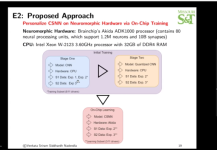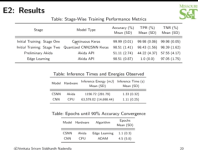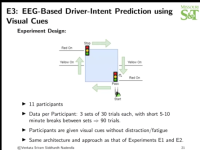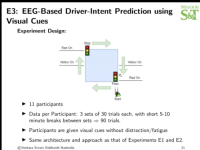You are using an out of date browser. It may not display this or other websites correctly.
You should upgrade or use an alternative browser.
You should upgrade or use an alternative browser.
BRN Discussion Ongoing
- Thread starter TechGirl
- Start date
Brainchip gets a nice mention.
Says Brainchip could be positioned as a global leader in next generation AI hardware.
Worth a read.
Says Brainchip could be positioned as a global leader in next generation AI hardware.
Worth a read.
Space Cadet
Regular
TSEX could do with a little help. There has been a bit of TENNsion here lately.Reckon we can have a bit of creative fun with TENNs.
aTENNuate … not bad
TENNsor
- give your sensors the competitive edge
aTENNsion
- demand the best for your AI solutions
SC
MDhere
Top 20
I agree the denoise capabilityis outstanting. At the agm when they did a demo, i had my hearing aids on and when they played the sentence with the words and noise then they played it with the denoise function i heard every word. Its not if but when. ❤
#tenns | Rudy Pei
🎧 aTENNuate: speech enhancement like never before. In real-time, on raw waveforms, and lightning fast ⚡ Speech enhancement is a very difficult task that requires an incredible amount of domain expertise. There are typically many moving parts and expertly crafted pipelines for processing audio...www.linkedin.com
View attachment 68983aTENNuate: Optimized Real-time Speech Enhancement with Deep SSMs on Raw Audio
We present aTENNuate, a simple deep state-space autoencoder configured for efficient online raw speech enhancement in an end-to-end fashion. The network's performance is primarily evaluated on raw speech denoising, with additional assessments on tasks such as super-resolution and...arxiv.org

View attachment 68985
Last edited:
Pom down under
Top 20
Should be a mention for brainchip but not watched it.
Last edited:
Should be a mention for brainchip but not watched it.
Yep, we’re the ‘go to’ outstanding winner, having watched it.
Pom down under
Top 20
Did it mention us?Yep, we’re the ‘go to’ outstanding winner, having watched it.
TheUnfairAdvantage
Regular
Akida 1000 was the star hardware used in their study and it passed with flying colours. They did say in the concluding statements that SNN hardware has some limitations but I imagine the current Akida hardware/software was designed to overcome those limitations. lGreat exposure for Akida. Good work Pom.Did it mention us?
I wonder if it can improve a cochlear implant. If it does, surely they are taking note.I agree the denoise capabilityis outstanting. At the agm when they did a demo, i had my hearing aids on and when they played the sentence with the works and noise then they played it with the denoise function i heard every word. Its not if but when. ❤
Smoothsailing
Regular
Did it mention us?
At. 35.30 it starts to talk about the advantages of Akida
At. 35.30 it starts to talk about the advantages of Akida
Last edited:
TheDrooben
Pretty Pretty Pretty Pretty Good
Should be a mention for brainchip but not watched it.
Great find Pom. The Assistant Professor was very impressed with the energy saving and speed to achieve 90% accuracy. Interesting that Missouri University of Science and Technology is not even in our University AI Accelerator program.
Happy as Larry
Last edited:
You have been saying that for the last 8 years.My opinion won’t make a difference to anything
The way I see it is either you invest and enjoy the journey or you don’t.
The way I see it is it’s going to be good if they do well and I hope they do
Every body is saying it’s taking longer than they thought
It’s not just BRN
It’s industry wide
Give it another 4 years at least
At this rate, give it another 12 years at least
Few-Shot Transfer Learning for Individualized Braking Intent Detection on Neuromorphic Hardware
Objective: This work explores use of a few-shot transfer learning method to train and implement a convolutional spiking neural network (CSNN) on a BrainChip Akida AKD1000 neuromorphic system-on-chip for developing individual-level, instead of traditionally used group-level, models using...
2024 study utilising akida 1000 for driver assisted braking system by Nathan Lutes from Missouri University. He has also worked for Boeing for the last 4 years
Pom down under
Top 20
Cristian Axenie / Project SPIDER - Team NeurOhm Brainchip Akida
SPIDER - Spiking Perception and processing for Intelligent Detection of pEdestrians on urban Roads

As Nvidia cools, we're looking to Aussie AI
For investors who feel they've missed Nvidia, the question is: Could there be an Australian equivalent primed for a similar meteoric rise?
Smoothsailing
Regular
BrilliantView attachment 69025
As Nvidia cools, we're looking to Aussie AI
For investors who feel they've missed Nvidia, the question is: Could there be an Australian equivalent primed for a similar meteoric rise?themarketonline-com-au.cdn.ampproject.org
Food4 thought
Regular
Yes I am here for the long termYou have been saying that for the last 8 years.
At this rate, give it another 12 years at least
Rome was not built in a day
Similar threads
- Replies
- 0
- Views
- 4K
- Replies
- 7
- Views
- 5K
- Replies
- 0
- Views
- 3K




